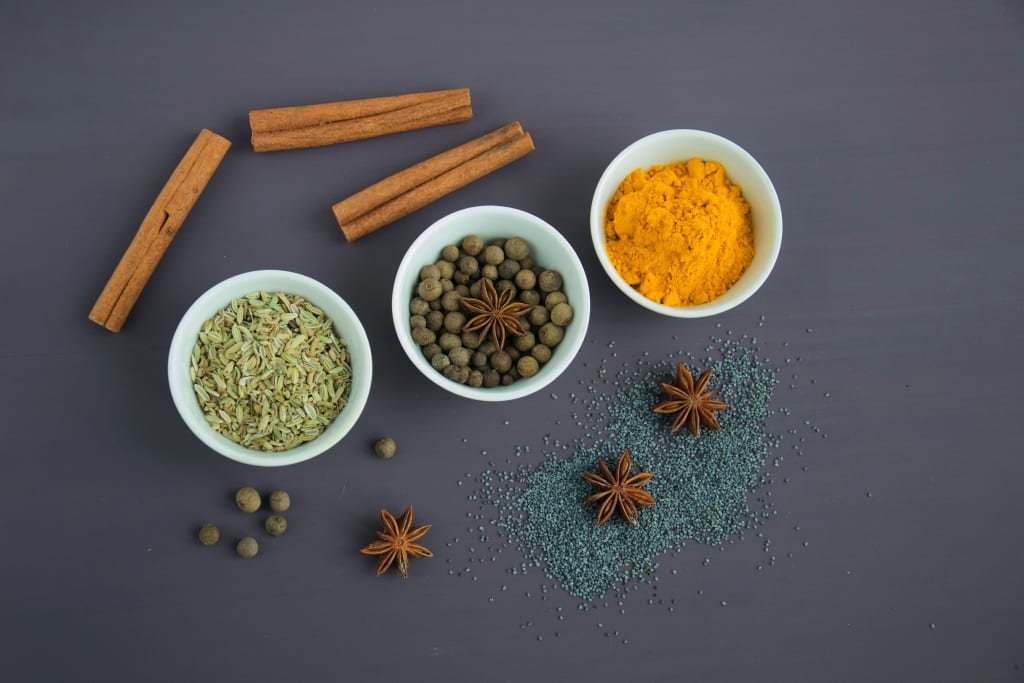Something About AYURVEDA
Some interesting facts about Ayurveda that you may not know:

Ayurveda.
Ayurveda is a traditional system of medicine that originated in India more than 3,000 years ago. It is based on the belief that health and wellness depend on a delicate balance between the mind, body, and spirit. The main goal of Ayurveda is to promote good health, rather than fight disease. Treatment plans are customized for each individual and may include herbal remedies, massage, and changes in diet and lifestyle. Ayurveda also emphasizes the use of preventative measures to maintain health and prevent illness. It is one of the oldest systems of medicine in the world, and is still widely practiced in India and other parts of South Asia.
The father of Ayurveda.
The traditional founders of Ayurveda are said to be the sages Atreya and Dhanvantari. Atreya is considered to be the father of Ayurvedic medicine, as he was the first to systematically compile and organize the existing knowledge of Ayurvedic medicine in written form. He is credited with writing many important texts on Ayurvedic medicine, including the "Atreya Samhita". Dhanvantari is considered as the god of Ayurvedic medicine and is revered as the source of all medical knowledge in Ayurveda. He is said to have emerged from the ocean of milk during the process of creation, holding a pot of elixir in one hand and the science of Ayurveda in the other.
Ayurveda in Vedic texts.
Ayurveda is mentioned in several ancient Vedic texts, including the Atharva Veda and the Charaka Samhita. The Atharva Veda, which is one of the four sacred texts of Hinduism, contains hymns and incantations for healing various illnesses and injuries. The Charaka Samhita, which is considered one of the foundational texts of Ayurveda, provides detailed information on the principles and practices of Ayurvedic medicine, including the use of herbal remedies, massage, and dietary and lifestyle recommendations for maintaining health and preventing illness. Other important Vedic texts that mention Ayurveda include the Susruta Samhita, which focuses on surgical techniques, and the Ashtanga Hridayam, which provides a summary of the principles and practices of Ayurvedic medicine.
Ayurveda and its uses for Humans
Ayurveda is primarily used to promote good health and prevent illness in humans. It is based on the belief that health and wellness depend on a delicate balance between the mind, body, and spirit, and that each person has a unique constitutional type, or "dosha," that determines their individual needs for maintaining balance.
Ayurvedic practitioners use a variety of techniques to help individuals maintain balance and achieve optimal health. These may include herbal remedies, massage, yoga, and meditation, as well as dietary and lifestyle recommendations. Ayurveda also emphasizes the use of preventative measures to maintain health and prevent illness, such as regular detoxification and rejuvenation programs, known as Panchakarma.
Ayurvedic treatment plans are customized for each individual, taking into account their constitutional type, symptoms, and overall health goals. Ayurveda is used to treat a wide range of conditions, including chronic conditions such as diabetes, arthritis, and digestive disorders, as well as acute conditions such as colds, flu, and injuries.
It's also used for rejuvenation and longevity, for the improvement of skin and hair, for stress management, for the management of mental and emotional health, for the management of pain and many other purposes.
It is important to note that Ayurveda should not be used as a substitute for conventional medical treatment in case of serious health conditions, but it can be used as an complementary approach. It is always recommended to consult with a qualified Ayurvedic practitioner before starting any treatment regimen.
Ayurveda its uses in history
Ayurveda has a long history of use in India, where it originated more than 3,000 years ago. It has been passed down through generations of practitioners and is still widely practiced today, particularly in India and other parts of South Asia.
In ancient times, Ayurvedic practitioners were highly respected members of society and were often called upon to treat the ruling elite and members of the royal court. Ayurvedic hospitals and medical schools were also established, where students could learn the principles and practices of Ayurvedic medicine.
During the colonial period in India, Ayurveda faced competition from Western medicine and was somewhat marginalised. However, it has experienced a resurgence of interest in recent years, as people have become more interested in natural and holistic approaches to health and wellness.
Ayurveda also spread to other parts of Asia, such as Sri Lanka and Tibet, and influenced traditional medicine systems in those regions. With the spread of Indian culture and religion, Ayurveda also spread to Southeast Asia, South Asia and Central Asia.
Today, Ayurveda is gaining popularity not only in the Indian subcontinent but also in the Western countries, where it is being used as a complementary and alternative medicine (CAM) approach to promote health and well-being.
It is also important to note that Ayurveda is recognized as a traditional system of medicine by the World Health Organization (WHO) and is included in the list of traditional medicine systems practiced around the world.
Ayurveda for kids
Ayurveda can be used to promote good health and prevent illness in children, just like it can be used for adults. Ayurvedic practitioners may use a variety of techniques to help children maintain balance and achieve optimal health, including herbal remedies, massage, yoga, and meditation, as well as dietary and lifestyle recommendations.
Ayurvedic treatment plans for children are customized for each individual child, taking into account their constitutional type, symptoms, and overall health goals. Ayurveda can be used to treat a wide range of conditions in children, including chronic conditions such as asthma, allergies, and digestive disorders, as well as acute conditions such as colds, flu, and injuries.
Herbs and other natural remedies are commonly used in Ayurvedic treatment for children, these are chosen based on the child's specific needs and constitution. Some Ayurvedic practitioners may also recommend dietary changes, such as avoiding certain foods or eating more of certain foods, to support the child's health.
Ayurveda also emphasizes the use of preventative measures to maintain health and prevent illness in children, such as regular detoxification and rejuvenation programs, known as Panchakarma, as well as massages and other therapies to boost the immunity and overall well-being of the child.
It's always recommended to consult with a qualified Ayurvedic practitioner before starting any treatment regimen for children, as they have the knowledge and expertise to provide the best advice and care for children.
It is also important to note that Ayurveda should not be used as a substitute for conventional medical treatment in case of serious health conditions in children, but it can be used as an complementary approach.
Ayurveda as home remedy.
Ayurveda offers a variety of home remedies that can be used to promote good health and prevent illness. These remedies are based on natural ingredients and are designed to be easy to use and access. Some popular Ayurvedic home remedies include:
- Turmeric: Known for its anti-inflammatory properties, turmeric can be taken as a supplement, added to food, or made into a paste with water and applied topically to reduce inflammation and promote healing.
• Ginger: Ginger is a natural anti-inflammatory and pain reliever and can be used to treat headaches, digestive problems, and other ailments. It can be added to food, made into tea, or taken as a supplement.
• Guggulu: Guggulu is a resin obtained from a small shrub and is used in Ayurveda for its anti-inflammatory properties, it is used for joint pains and other inflammatory conditions.
• Triphala: Triphala is a combination of three fruits and is used as a laxative, it also helps in detoxifying and rejuvenating the body.
• Shankhpushpi: Shankhpushpi is a plant that is used in Ayurveda for its memory-enhancing properties and is considered useful for children to improve their concentration and memory.
• Ashwagandha: Ashwagandha is a herb used in Ayurveda for its adaptogenic properties, it helps in improving the overall immunity and reducing stress and anxiety.
These are just a few examples of Ayurvedic home remedies that can be used to promote good health and prevent illness. It is important to remember that these remedies may not be suitable for everyone, so it's always a good idea to consult with a qualified Ayurvedic practitioner before using any new remedies.
It's also important to note that Ayurveda home remedies should not be used as a substitute for conventional medical treatment in case of serious health conditions, but it can be used as an complementary approach.
Ayurveda’s uses in chronicle diseases
Ayurveda can be used to treat a wide range of chronic diseases, including:
Diabetes: Ayurveda uses a combination of herbal remedies, dietary changes, and lifestyle modifications to help manage diabetes and prevent complications. Herbs such as fenugreek, bitter gourd, and turmeric are commonly used to lower blood sugar levels.
Arthritis: Ayurveda uses a combination of herbal remedies, massage, and dietary changes to reduce inflammation and pain in the joints. Herbs such as ginger, turmeric, and ashwagandha are commonly used to reduce inflammation and improve joint mobility.
Digestive disorders: Ayurveda uses a combination of herbal remedies, dietary changes, and lifestyle modifications to improve digestion and prevent digestive disorders. Herbs such as ginger, fennel, and licorice are commonly used to improve digestion and relieve constipation.
Cardiovascular diseases: Ayurveda uses a combination of herbal remedies, dietary changes, and lifestyle modifications to improve heart health and prevent cardiovascular diseases. Herbs such as arjuna, garlic, and ginger are commonly used to improve heart health and lower cholesterol levels.
Chronic respiratory diseases: Ayurveda uses a combination of herbal remedies, dietary changes, and lifestyle modifications to improve respiratory function and prevent respiratory diseases. Herbs such as licorice, ginger, and tulsi are commonly used to improve respiratory function and relieve symptoms such as coughing and wheezing.
Chronic skin conditions: Ayurveda uses a combination of herbal remedies, dietary changes, and lifestyle modifications to improve skin health and prevent chronic skin conditions. Herbs such as neem, turmeric, and aloe vera are commonly used to improve skin health and relieve symptoms such as itching and redness.
It's always recommended to consult with a qualified Ayurvedic practitioner before starting any treatment regimen for chronic diseases, as they have the knowledge and expertise to provide the best advice and care for patients.
It is also important to note that Ayurveda should not be used as a substitute for conventional medical treatment in case of serious chronic diseases, but it can be used as an complementary approach.
Ayurveda and its diet
Ayurveda places a strong emphasis on diet as a means of promoting good health and preventing illness. According to Ayurveda, the right diet can help to maintain balance and harmony within the body, while the wrong diet can lead to imbalance and disease.
Ayurvedic practitioners recommend a diet that is tailored to an individual's unique constitutional type, or "dosha." Each dosha is associated with certain characteristics and is said to be influenced by different factors in the diet.
For example, the "Pitta" dosha is associated with heat, and individuals with a predominance of Pitta are advised to eat cooling foods such as fruits and vegetables, and to avoid spicy, fried, and oily foods.
The "Vata" dosha is associated with dryness and coldness and individuals with a predominance of Vata are advised to eat warm, moist, and grounding foods such as soups, stews, and porridge, and to avoid raw, cold, and dry foods.
The "Kapha" dosha is associated with heaviness and dampness and individuals with a predominance of Kapha are advised to eat light, dry, and warming foods such as vegetables, legumes, and whole grains, and to avoid heavy, sweet, and oily foods.
Ayurveda also recommends to eat according to the seasons, and to consume seasonal foods that are fresh, ripe, and locally grown. It also advises to chew the food well, eat in a relaxed and peaceful environment and not to mix incompatible foods.
Ayurvedic practitioners may also recommend certain herbs, spices, and other food items to support the health and well-being of the individual.
It is important to note that Ayurvedic diet recommendations are not intended to be a one-size-fits-all approach and should be tailored to the individual's unique needs, constitution and health conditions. It's always recommended to consult with a qualified Ayurvedic practitioner before making any significant changes to your diet.
Surgeries in Ayurveda.
Surgeries are a part of the Ayurvedic medical system, known as "Shalya Tantra" or surgical science. Ayurvedic surgeons use a variety of surgical techniques to treat a wide range of conditions, including injuries, tumors, and other abnormal growths, as well as hernia, fistula, and other conditions.
Ayurvedic surgical techniques were developed to minimize pain, bleeding, and other complications, and to promote rapid healing. They use special surgical instruments and techniques, such as cauterization, to minimize the size of incisions and reduce the risk of infection.
In ancient times, Ayurvedic surgeons were highly skilled and respected members of society, and Ayurvedic surgical texts, such as the Sushruta Samhita, provided detailed information on surgical procedures, instruments, and postoperative care.
In Ayurveda, surgery is considered as the last resort when all other treatments have failed. Ayurvedic surgeons use a variety of surgical techniques such as excision, incision, scraping, and evacuation of abscesses, and also use special surgical instruments such as knives, needles, probes, and scissors.
It's important to note that Ayurvedic surgeries should not be used as a substitute for conventional medical treatment in case of serious health conditions and should only be performed by a qualified and skilled Ayurvedic surgeon.
It's also important to note that, while Ayurveda has a surgical branch, it's not widely practiced or recognized by the majority of the Ayurvedic practitioners, as most of them focus on non-invasive treatments such as herbal remedies, massage and dietary modifications.
Ayurveda in education.
Ayurveda is taught as a formal system of medicine in universities and colleges in India, Nepal and other countries where it is practiced. The education and training in Ayurveda is provided by Ayurvedic colleges and universities, which offer undergraduate, graduate and postgraduate courses in Ayurveda.
The undergraduate course in Ayurveda is known as Bachelor of Ayurvedic Medicine and Surgery (BAMS) and it typically takes five and a half years to complete. The postgraduate course in Ayurveda is known as Master of Ayurvedic Medicine and Surgery (MAMS) and it typically takes two years to complete.
Students who complete their education in Ayurveda are eligible to register with the respective state councils of Ayurveda and practice as Ayurvedic doctors.
In addition to formal education in Ayurveda, there are also many Ayurvedic training centers and institutes that offer short-term and long-term courses in Ayurvedic massage, herbal remedies, and other aspects of Ayurveda. These courses are designed for individuals who are interested in learning more about Ayurveda and incorporating Ayurvedic principles and practices into their personal or professional lives.
It's important to note that the education and training in Ayurveda varies from country to country and not all countries have a formal system of education in Ayurveda. The recognition and regulation of Ayurveda also varies from country to country.
It's also important to note that Ayurveda is a traditional system of medicine, and education and practice may not be regulated and may not adhere to the same standards as conventional medicine. Therefore, it's important to find qualified and reputable practitioners and institutions when seeking Ayurvedic education or treatment.
Ayurveda and its acquaintances
Ayurveda is taught as a formal system of medicine in universities and colleges in India, Nepal and other countries where it is practiced. The education and training in Ayurveda is provided by Ayurvedic colleges and universities, which offer undergraduate, graduate and postgraduate courses in Ayurveda.
The undergraduate course in Ayurveda is known as Bachelor of Ayurvedic Medicine and Surgery (BAMS) and it typically takes five and a half years to complete. The postgraduate course in Ayurveda is known as Master of Ayurvedic Medicine and Surgery (MAMS) and it typically takes two years to complete.
Students who complete their education in Ayurveda are eligible to register with the respective state councils of Ayurveda and practice as Ayurvedic doctors.
In addition to formal education in Ayurveda, there are also many Ayurvedic training centers and institutes that offer short-term and long-term courses in Ayurvedic massage, herbal remedies, and other aspects of Ayurveda. These courses are designed for individuals who are interested in learning more about Ayurveda and incorporating Ayurvedic principles and practices into their personal or professional lives.
It's important to note that the education and training in Ayurveda varies from country to country and not all countries have a formal system of education in Ayurveda. The recognition and regulation of Ayurveda also varies from country to country.
It's also important to note that Ayurveda is a traditional system of medicine, and education and practice may not be regulated and may not adhere to the same standards as conventional medicine. Therefore, it's important to find qualified and reputable practitioners and institutions when seeking Ayurvedic education or treatment.
Ayurveda and its acquaintances
Ayurveda is often used in conjunction with other traditional and complementary medicine systems. Some examples include:
• Yoga: Yoga is a physical and spiritual practice that originated in ancient India and is closely associated with Ayurveda. Yoga focuses on the integration of the body, mind, and spirit and is often used to promote physical and mental well-being. Many Ayurvedic practitioners recommend yoga as a complementary therapy to help balance the doshas and promote overall health and well-being.
• Unani: Unani is a traditional system of medicine that originated in Greece and was later adopted in the Indian subcontinent. It is based on the four humor principles (blood, phlegm, yellow bile, and black bile) and is often used to treat a wide range of health conditions, including digestive disorders, respiratory problems, and skin diseases.
• Siddha: Siddha is a traditional system of medicine that originated in South India and is based on the principles of the eight elements (earth, water, fire, air, ether, sun, moon, and the individual's soul). It is often used to treat a wide range of health conditions, including digestive disorders, respiratory problems, and skin diseases.
• Homeopathy: Homeopathy is a system of medicine that is based on the principle of "like cures like" and is often used to treat a wide range of health conditions, including allergies, asthma, and other chronic conditions.
• Naturopathy: Naturopathy is a holistic approach to health that emphasizes the use of natural therapies, such as herbal remedies, massage, and dietary changes
Some unknow and interesting facts about Ayurveda.
Here are some interesting facts about Ayurveda that you may not know:
• Ayurveda is considered one of the oldest medical systems in the world, with a history that dates back more than 3,000 years.
• Ayurveda is considered a holistic approach to health, with a focus on balancing the mind, body, and spirit.
• Ayurveda has been passed down through generations of practitioners and is still widely practiced today, particularly in India and other parts of South Asia.
• Ayurveda is recognized as a traditional system of medicine by the World Health Organization (WHO) and is included in the list of traditional medicine systems practiced around the world.
• In Ayurveda, there are three doshas (constitutions) which are Vata, Pitta and Kapha, and each person has a unique balance of these doshas, which determines their individual needs for maintaining balance.
• Ayurveda has a surgical branch, known as "Shalya Tantra" or surgical science, which is not widely practiced or recognized by the majority of the Ayurvedic practitioners.
• Ayurveda has a strong emphasis on diet as a means of promoting good health and preventing illness
About the Creator
Enjoyed the story? Support the Creator.
Subscribe for free to receive all their stories in your feed. You could also pledge your support or give them a one-off tip, letting them know you appreciate their work.





Comments
Srinivas is not accepting comments at the moment
Want to show your support? Send them a one-off tip.